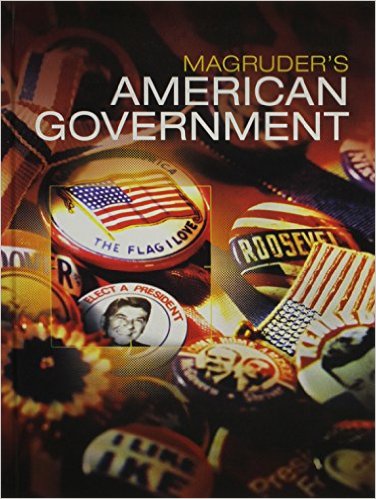
Magruder’s American Government
1st Edition
ISBN: 9780133306996
Textbook solutions
All Solutions
Section 4-5: Congress at Work-Organization and Committees
Exercise 1
Step 1
1 of 4
The U.S. Constitution demands Congress to convene one time every two years on January 3rd as the new term is ordered to begin.
Step 2
2 of 4
In the **House of Representatives**, **all of the 435 seats are up for election**. The political party chooses its speaker of the House, who proceeds during the process. Reading of the rules is held, followed by selecting the committee members by floor voting.
Step 3
3 of 4
The **Senate** is referred to as a continuous political body. Only a **third of the seats are up for election** in the Senate, as the rest carries on to the following term. The newly elected individuals then follow a process to be sworn in and fill the vacancies of the Senate and committees.
Result
4 of 4
Congress convenes **one time every two years** on January 3rd. See the steps for further explanation.
Exercise 2
Step 1
1 of 3
The **Speaker of the House** has to make sure that the legislation proceeding to pass has to be confirmed by the majority party. He also had the role where he should determine when each bill gets to the floor. Also, they participate in chairing of the political party’s steering committees. Speakers act as a form of mediator in Congress to create and maintain order. The Speaker of the House is selected based on the **votes from the majority of a political party**. Speakers are more potent in Congress than the president of the Senate, and, unlike the president of the Senate, they always represent their political party.
Step 2
2 of 3
The **president of the Senate** is the **vice president** of the U.S. Acts as a mediator as well, just in a different way with different roles compared to the Speaker of the House. He can acknowledge members, put political matters and questions to a vote. He should preside the Senate when ceremonial occasions occur and when the votes are tied and break off them is required. He should not influence the proceedings in Congress, as he does not have the right to take the floor and speak.
Result
3 of 3
The **Speaker of the House** has a **more influential role** than the president of the Senate. He represents the majority of the political party, unlike the president of the Senate, who does not act as a member of a political party.
Exercise 3
Step 1
1 of 4
We can identify the following party officers: the **Caucus** leaders, the **Floor** leaders (**majority** and **minority** leader), and **party whips**.
Step 2
2 of 4
The **Caucus leader** is in control of harmonizing and clarifying the general message of a political party. They hold the responsibility to make motions and represent the minority caucus as well. Caucus leaders work together to create common legislative objectives among different political parties; they are **policy committees**.
Step 3
3 of 4
The **Floor Leaders** are considered to be the most important officers in Congress. They are picked by their political parties to promote their interest; they can be referred to as legislative strategists. They condone the party’s decisions to benefit their party. A floor leader who holds most of the seats in a given House is called the **majority leader** (most potent in the presented House). The one who has a minority of the seats in each house is called the **minority leader**.
Step 4
4 of 4
The **Party whip’s** role is to assist their floor leaders when the political action is taking place to further work on getting closer to the party’s interest. They also serve as a link between the leader of the party and its rank-and-file members.
Exercise 4
Step 1
1 of 5
**Select committees** are assigned to handle non-permanent political issues and investigate.
Step 2
2 of 5
**Standing committees** administrate problems of lasting legislative significance.
Step 3
3 of 5
**Joint committees** have a similar role to one of the select committees. They aid in the political interactions between the Senate and the House of Representatives.
Step 4
4 of 5
**Conference committees** have to solve differences in bicameral legislation between the Senate and the House of Representatives.
Step 5
5 of 5
The **House Rule Committee** sets the agenda for the legislation in the House while making sure the political proceeding is running effectively.
Exercise 5
Step 1
1 of 3
The **committee chair** serves as the **head of the committees** in each chamber. He is responsible for setting committees’ agendas and deciding whether and when the passed bills should be considered. The committee chair also administrates and directs other committee members.
Step 2
2 of 3
Each member of the committee chair is chosen **by the majority caucus of a given political majority party**.
Result
3 of 3
The **committee chairs** are chosen in accordance with the majority of the caucus of a political party. Their role is to set committees agendas, consider whether and when bills should be passed, and supervise the committees.
unlock

